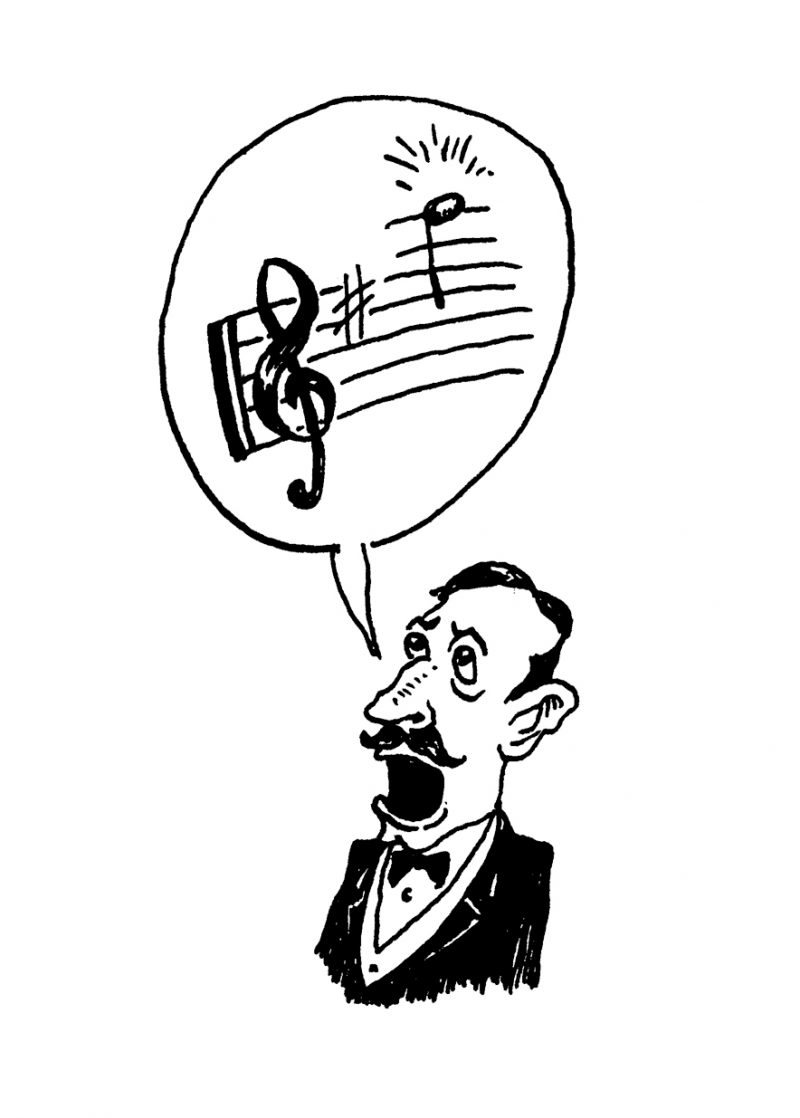I. “I SING LIKE A CAT”
We love him because he defies nature. Because manhood roars in a bass-baritone, and the Adam’s apple is supposed to swallow the pure, high voice of babes. Yet male voices are always leaping octaves. Rebel yells, farm-boy hollers, broken-voiced shrieks, dog-whistle laughs sound virile enough to their listeners. For most of their teen years, some boys can squeal as high and loud as before their voices changed. And an artfully cultivated falsetto, crooned by an Al Green or BeeGee, has become a vocalized foreplay. That women swoon to such voices has long been apparent, just as men consider Lauren Bacall’s the archetypal bedroom voice. Both sexes are enthralled to hear their natural pitches claimed by a foreign power.
Yet there are some men who dream of notes far higher than Smokey Robinson or David Daniels. They dream of soaring higher than Maria Callas, higher than Mariah Carey. They don’t imagine themselves women; they call themselves male sopranos. Their quixotic attempt, rarely lovely but often thrilling, makes rigid distinctions of gender and culture, biology and physiology, most problematic. For what so boldly confesses male insufficiency as the need to reclaim the vocal birthright of a boy or a woman? In other words, to complete yourself by becoming what you transparently are not?
The soprano voice has never been exclusively female. During the age of the castrato, which sputtered out in the late nineteenth century, throat and chest combined, so that a capon’s range would have a bulldog’s volume. Sopranists (the classical term for male sopranos) have limited themselves to an archaic repertoire: the baroque and early classical eras when roles were composed for their range. But outside of classical music, more-casual attitudes prevailed. To many unsophisticated listeners, the whole apparatus of classical singing is thoroughly artificial, the soprano being only the most extreme version. Thus, the soul singer Wilson Pickett could insist that his falsetto shriek was an “opera note”—it was a soprano high C—and a YouTube clown will summon up “my opera voice,” one three octaves above that in which he speaks.
In the nineteenth century, an American man could hear falsetto coming from all directions: from the touring opera companies that provided a national entertainment, as well as from blacks and Indians. By the early twentieth century, ballad singing had become the province of sweet-voiced high tenors. John McCormack had the most memorable head tones; later singers, like Donald Novis or Cliff “Ukulele Ike” Edwards, couldn’t match his technique, and their top notes were lighter with more of a feminine sweetness. Extreme ranges were cultivated. One of the earliest record stars was Charles...
You have reached your article limit
Sign up for a digital subscription and continue reading all new issues, plus our entire archives, for just $1.50/month.
Already a subscriber? Sign in





